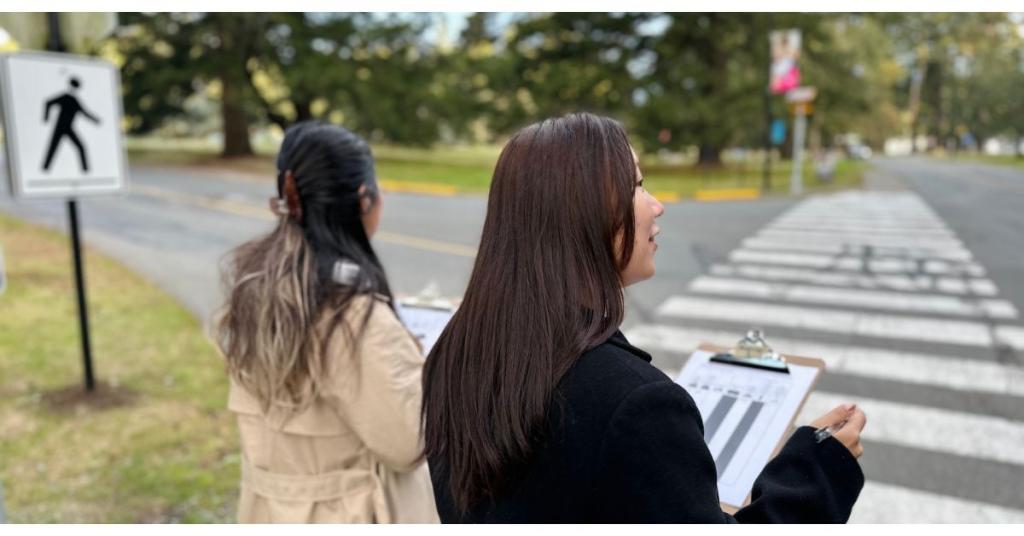BBA students track climate-friendly transportation
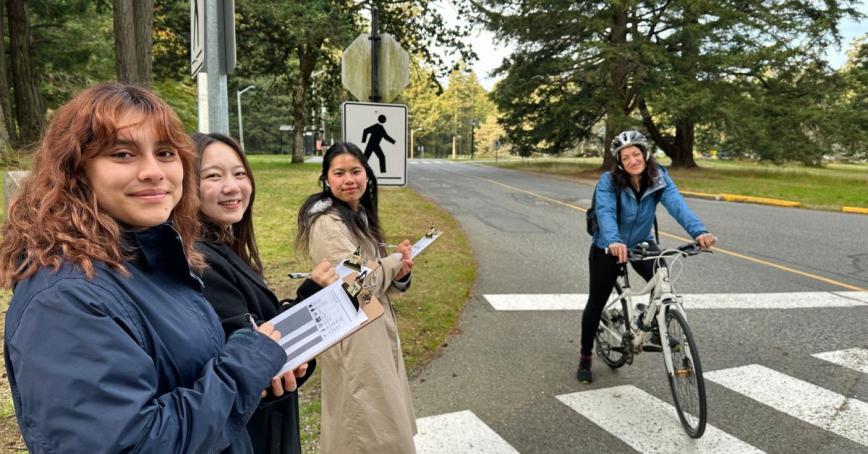
On a chilly fall morning, students from the Bachelor of Business Administration program gathered in the name of sustainable transportation.
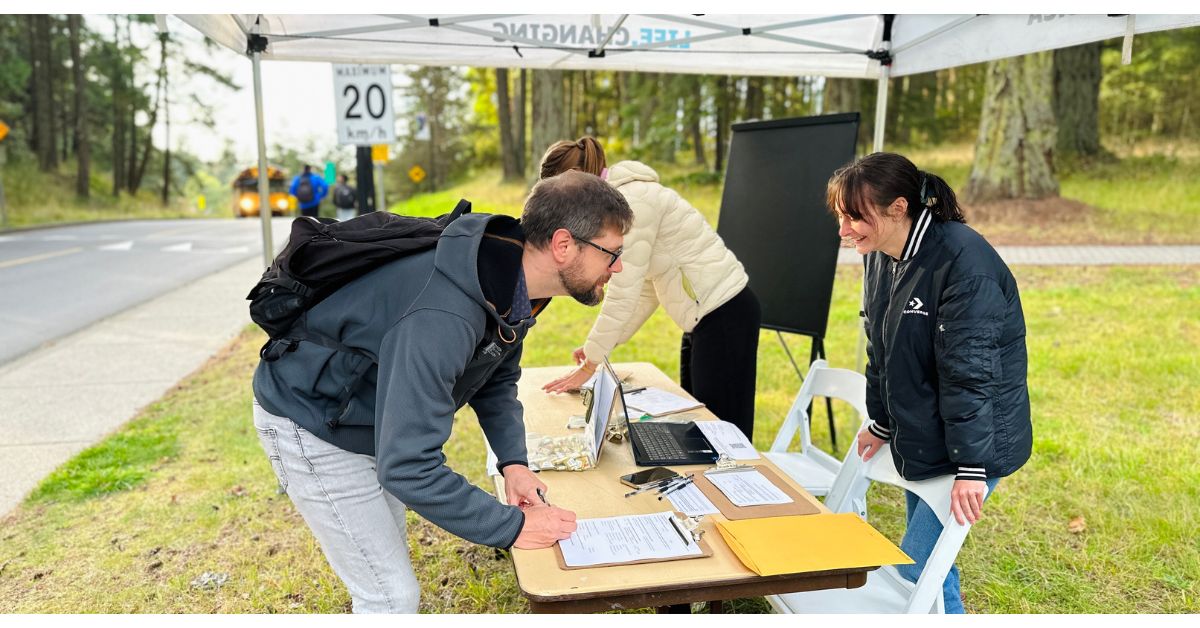
BBA students led the 2024 “mode split count” — a report on how people commute to and from campus — to better understand travel patterns and the associated greenhouse gas emissions of each commuter.
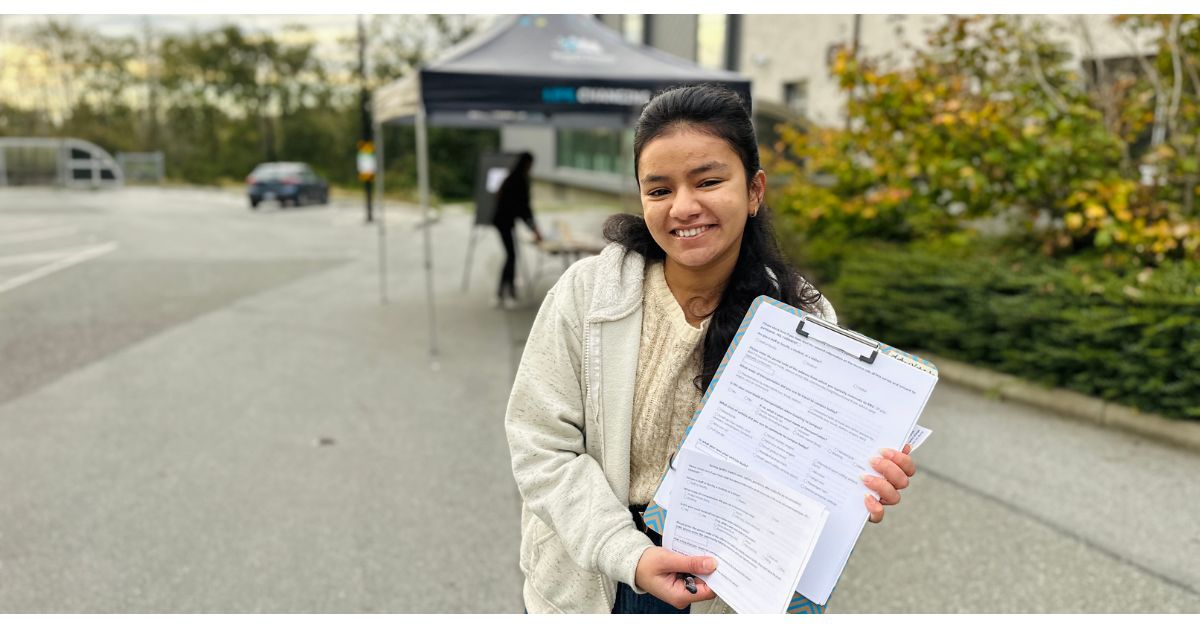
Student research assistants were stationed at three main campus entrances to observe modes of transportation and ask commuters to fill out a brief survey about their transportation mode and length of their commute. Students also invited commuters to learn about the carbon emission associated with their transportation, using an emissions estimator.

“By estimating the emissions associated with staff and student commuting, the understanding we gain can help us better develop policies to reduce emissions,” says Todd Thexton, assistant professor in the School of Business and faculty lead for the mode split count. “Reporting on emissions associated with the services the university provides is a key commitment of our climate action plan.”
The BBA class is conducting the report in partnership with the RRU office of Climate Action and Sustainability, who are tasked with understanding the university’s direct and indirect emissions and ensuring the school is on track to achieve the goals set out in the RRU Climate Action Plan.
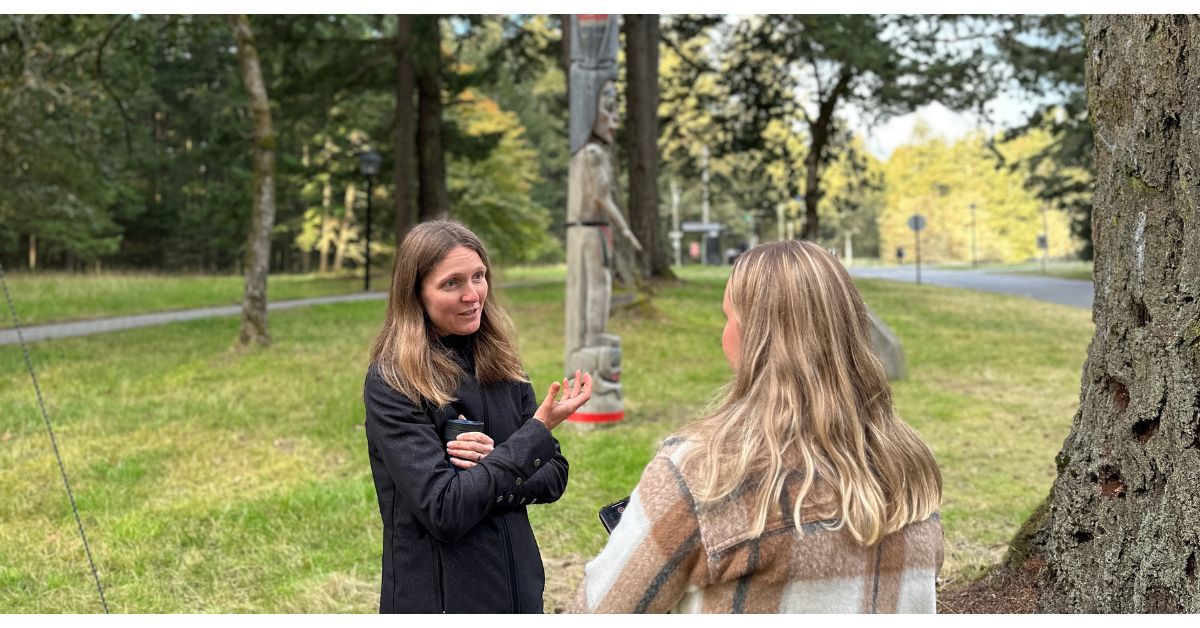
The last mode split count was completed in 2018 and found that more than 60 per cent of the RRU population was driving to campus, shares Maria Bremner, manager of climate and sustainability.
“We’re hoping these numbers will reflect a greater proportion this year of alternative modes like biking and transit and walking,” says Bremner.
“As part of the Climate Action Plan, we’ve committed to track, monitor and understand the university’s carbon footprint,” she explains. “Commuting emissions are indirect — the university’s policies and programs around transportation can have an influence on people’s travel choices. So, Royal Roads is, by default, responsible for those emissions. So, within that, we need to understand and calculate those commuting emissions.”
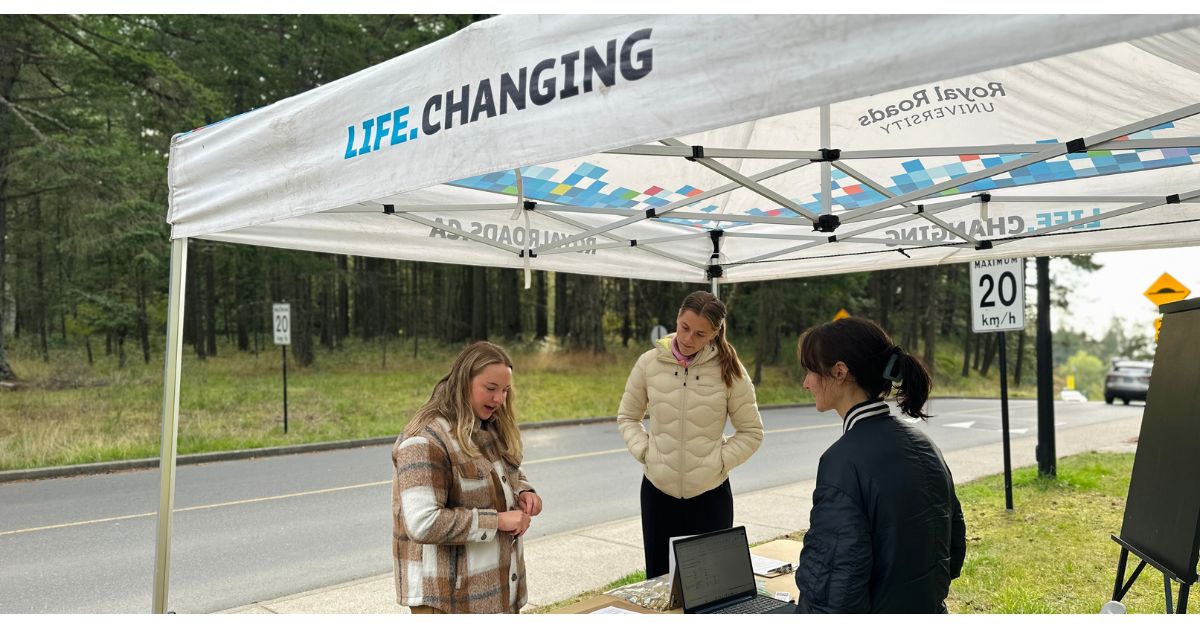
BBA students Nia Hill and Meike Verhoef shared their enthusiasm for the project and program.
“[The mode split] helps to identify the carbon emissions for Royal Roads, and how it can be improved,” says Hill, an exchange student from Liverpool John Moores University in the United Kingdom. “It’s a good thing to keep track of, especially because the university is so focused on sustainability – just having that card saying we are very conscientious of the environment.”
Project-based learning, real-world scenarios and group work are the highlights of the BBA program for students, say Hill and Verhoef. This is one of many projects that the students are working on throughout their program. Learn more:
- Students “fish” for new ideas alongside Cowichan Tribes
- BBA students make an impact through e-commerce
- Students' efforts go to “waste”
- Designing “sticky” cities: business students partner with communities
